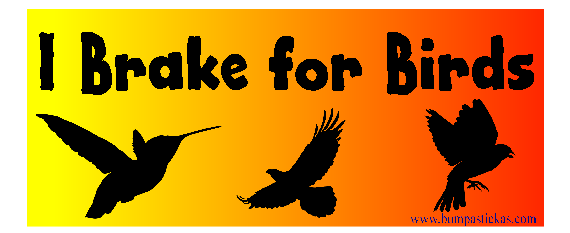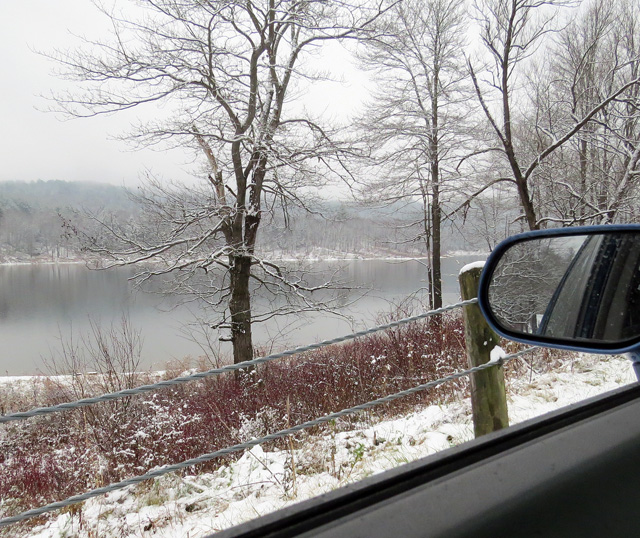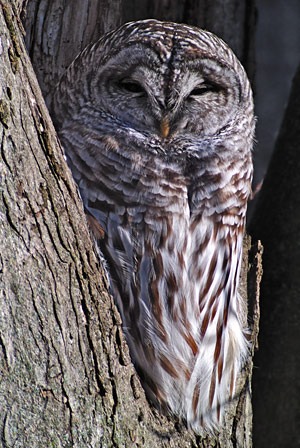One of my favorite bloggers, Larry of The Brownstone Birding Blog, recently wrote a clever post called Cold Weather Car Brrrrrrding! This time of year, he notes, “birding by car can be a good option when you’re dealing with wicked windy winter weather.” Amen, brother.
I use my truck quite frequently, particularly in lousy weather, to scout for birds on the back roads of central Vermont. Not only is the weather lousy right now, it is also deer season and most outdoor people take a two week vacation from tromping through the woods. Even with blaze orange gear, it’s not too safe to venture into the woods, especially with a reddish-brown dog running beside you.
Yesterday morning, I headed out for a short jaunt – this time in the car which needed snow tires mounted – and after the studded snow tires were in place – I did a little road birding. I took a look at our local reservoir which was pretty, but bird-free.
Larry pointed out some of the benefits of birding by vehicle in inclement weather:
- you can stay warm
- you can listen to sports, NPR, or music on the radio
- it’s a good location from which to drink your coffee
- your car makes an excellent blind so that you don’t scare off good birds and makes it easier to take pictures of them
- you can cover a lot of ground by driving directly to some hot spots without spending a lot of time walking around
I would add that I can keep my iPhone plugged in and record birds into BirdLog without frozen fingers and also that I can keep Penny, our dog, happy in the back seat.
Birding with someone to watch while you drive can be helpful but that infrequently works for me on local outings. However, more than once Mary has spoken sharply to me as I try it ID a hawk on a pole while driving toward it, sometimes literally.
Vermont has a strong new “no handheld device” law to try to help with distractions while driving. We’ve all encountered distracted drivers and they can be dangerous. Unless you are on a back road, keep your attention on the road while birding by vehicle. That life bird you just freaked out over can turn out to be a lifer – your life.
Good birding. Safe driving.



